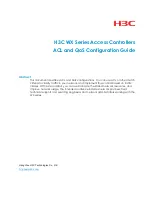DR
AFT
DR
AFT
DRAFT
DR
D
RAFT
DRAFT
DRA
FT DRAF
D
RAFT DRAFT DRAFT DRAFT DRAFT D
DRAFT
D
RAFT DRA
FT DRAFT DRAFT DRAFT DRA
UM10316_0
© NXP B.V. 2008. All rights reserved.
User manual
Rev. 00.06 — 17 December 2008
312 of 571
NXP Semiconductors
UM10316
Chapter 21: LPC29xx CAN 0/1
8.5 Extended frame-format group identifier section
The extended frame-format group identifier section must contain an even number of
entries of the same form as in the extended frame-format explicit identifier section (see
). Like the explicit identifier section, the group identifier section must be
arranged in ascending numerical order. The upper and lower bounds in the section are
implicitly paired as an inclusive group of extended addresses, so that any received
address which falls in the inclusive group is accepted and received. Software must
maintain the section to consist of such word pairs.
This section starts with CAEFGSA start address register and contains the identifiers index
(h + i + j + k) lower bound to index (h + i + j + k + l
−
1) upper bound. The bit allocation is
given in
8.6 CAN acceptance filter registers
The complete register layout of the CAN acceptance filter is shown in
. Refer
to it for resolving register, register-slice and bit names.
8.7 CAN acceptance-filter mode register
The ACCBP and ACCOFF bits of the acceptance-filter mode register CAMODE are used
for putting the acceptance filter into the bypass- and off-modes respectively. The EFCAN
bit of the mode register can be used to activate FullCAN mode for received 11-bit CAN ID
messages.
Acceptance filter off-mode
is typically used during initialization. In this mode an
unconditional access to all registers and the look-up table RAM is possible. CAN
messages are not accepted in acceptance filter off-mode and are therefore not stored in
the receive buffers of active CAN Controllers.
Acceptance filter bypass-mode
can be used (for example) to change the acceptance
filter configuration in a running system by changing identifiers in the ID look-up table
memory. Software acceptance filtering has to be used during this reconfiguration.
Table 264. Extended frame-format explicit identifier section
Bit
Symbol
Description
EFF_GRP_ start address
31 to 29 SCC
CAN controller number
28 to 0
ID[28:0]
29-bit CAN 2.0 B identifier
Table 265. Extended frame-format group identifier section
Bit
Symbol
Description
CAEFGSA start address
31 to 29 SCC
Lower bound: CAN controller number
28 to 0
ID[28:0]
Lower bound: 29-bit CAN 2.0 B identifier
CAEFGSA start a 4
31 to 29 SCC
Upper bound: CAN controller number
28 to 0
ID[28:0]
Upper bound: 29-bit CAN 2.0 B identifier


















